Fantastic Pottery Decoration Techniques You Should Try
Are you ready to dive into the colorful world of pottery decoration? Whether you're a beginner just getting your hands dirty or a seasoned pro looking to spice things up, there’s a treasure trove of techniques waiting for you. Pottery is not just about shaping clay; it’s about expressing your creativity and bringing your unique vision to life. In this article, we’ll explore a variety of pottery decoration techniques that can elevate your ceramic creations from mundane to magnificent. So, grab your tools, and let’s get started!
Hand painting is perhaps the most personal way to decorate your pottery. Imagine wielding a brush, letting your imagination flow onto the surface of your clay. This technique allows for unique, personalized designs that can transform a simple bowl into a masterpiece. Using brushes and underglazes, you can create intricate patterns, swirling colors, and even detailed scenes. Just think of it as painting on a canvas, but with the added dimension of three-dimensional form. The best part? Each piece becomes a true work of art, reflecting your individual style and personality.
If you’re looking for a way to add texture and depth to your pottery, stamping and imprinting might just be your new best friends. This technique involves using tools to create designs on wet clay, allowing you to produce stunning patterns that can really make your work pop. Think of it like creating a fabric pattern—each stamp can add a layer of interest, making your pottery visually captivating. You can use anything from commercial stamps to natural objects like leaves or stones to create unique impressions, making each piece a conversation starter.
Have you ever wanted to reveal the hidden beauty beneath the surface? That’s exactly what the sgraffito technique allows you to do! By scratching through a surface layer of slip to expose a contrasting color underneath, you can create beautiful, detailed designs that are both striking and sophisticated. It’s like peeling back the layers of an onion to find a vibrant core. This technique can be particularly effective for intricate patterns or images, giving your pottery a refined touch that’s sure to impress.
Slip trailing is a technique that brings a whole new dimension to your pottery. By using a squeeze bottle to apply liquid clay (known as slip) to the surface, you can create intricate, raised designs that add texture and interest. Imagine piping icing onto a cake—each swirl and dot can be precisely controlled, allowing for a high degree of creativity. This technique can be used to create anything from delicate floral designs to bold geometric patterns, making your pottery truly stand out.
Glazing is an essential step in pottery decoration that can dramatically affect the final appearance of your pieces. It’s like the cherry on top of your ceramic cake! Various glazing techniques can produce different effects—from glossy finishes that catch the light to matte surfaces that invite touch. The choice of glaze can enhance the colors and textures of your work, creating a cohesive and aesthetically pleasing final product. Experimenting with layering glazes can also yield unexpected and beautiful results, so don’t be afraid to get creative!
For those who want to apply designs with precision and ease, using decals and transfers is a modern approach that can yield stunning results. This technique allows you to transfer detailed images and patterns onto your pottery without the hassle of hand-painting. Just think of it as putting a sticker on your favorite notebook, but way cooler! With a variety of designs available, from whimsical to sophisticated, you can easily personalize your pottery and make it uniquely yours.
Incorporating natural materials into your pottery decoration can create one-of-a-kind textures and patterns that celebrate the beauty of nature. Think leaves, flowers, or even stones pressed into the clay. This organic approach not only adds a touch of nature to your pottery but also connects your work to the environment. It’s like bringing a piece of the outdoors inside! The results are often stunning and can evoke a sense of tranquility and harmony in your creations.
If you’re looking to add a three-dimensional quality to your pottery, carving and relief work might be the way to go. By removing clay to create designs that stand out, this technique can make your pieces visually striking and tactile. It’s akin to sculpting, where every cut and groove tells a story. Whether you’re creating simple lines or intricate patterns, the relief effect can add depth and intrigue to your work, making it a feast for the eyes.
Why limit yourself to one technique when you can combine several? Mixed media techniques allow for endless creativity and experimentation in pottery decoration. By incorporating different materials and methods, you can create innovative designs that are truly unique. Think of it as a potter’s playground—where the only limit is your imagination! Whether you’re combining traditional methods with modern materials or layering different textures, mixed media can lead to stunning results that are sure to impress.
Q: What is the best technique for beginners?
A: Hand painting and stamping are great starting points for beginners, as they allow for creativity without requiring advanced skills.
Q: Can I mix different decoration techniques?
A: Absolutely! Mixing techniques can lead to innovative and unique designs, so feel free to experiment!
Q: How do I choose the right glaze?
A: Consider the color and finish you want to achieve. Test different glazes on sample pieces to see how they interact with your clay.
Q: Are natural materials safe to use in pottery?
A: Yes, as long as they’re properly prepared and cleaned. Always test materials to ensure they don’t react negatively during firing.
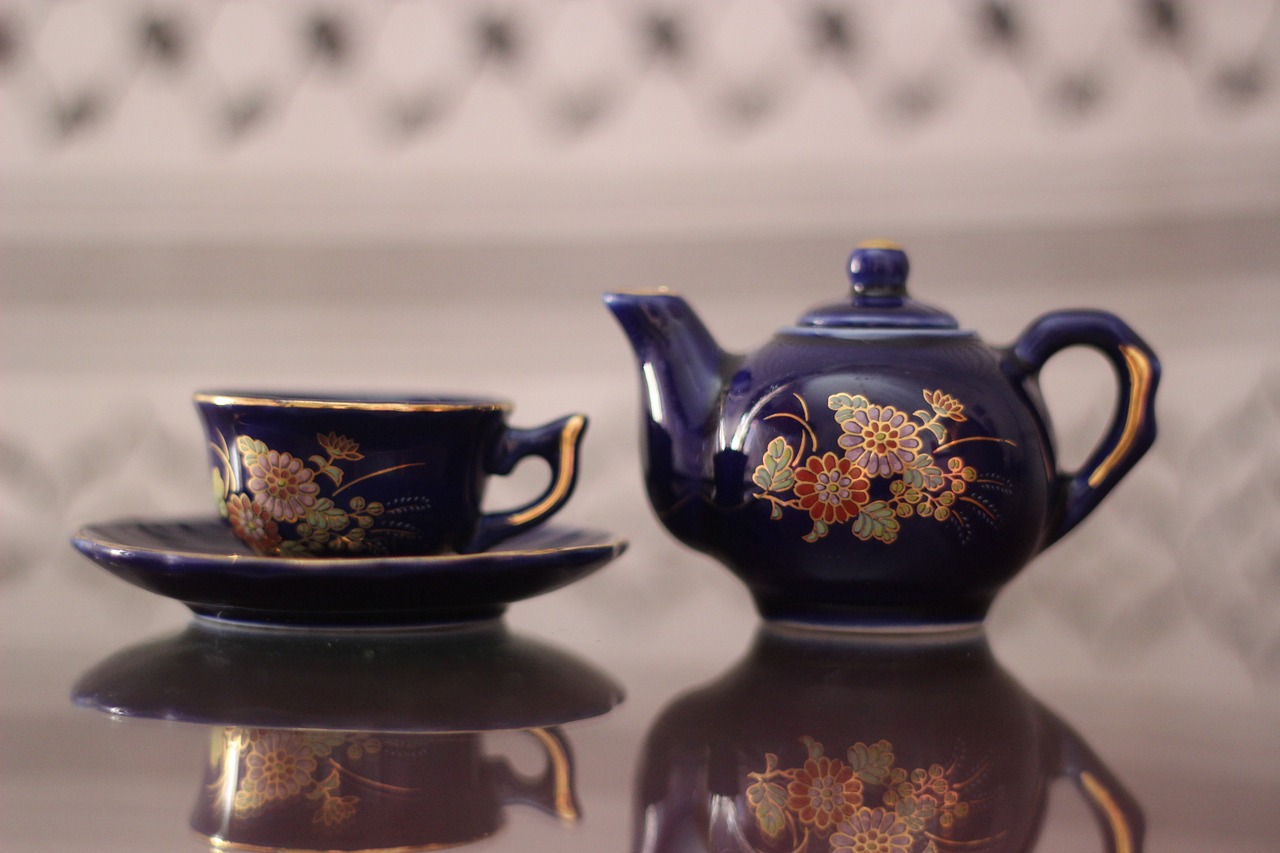
1. Hand Painting
Hand painting is one of the most delightful pottery decoration techniques, allowing you to unleash your creativity and create unique, personalized designs on your ceramic pieces. Imagine transforming a plain, unadorned pot into a vibrant canvas that tells a story or evokes a feeling. With just a brush and some underglazes, you can turn your ideas into stunning visual art. This technique is not just about adding color; it’s about expressing yourself and making each piece a true reflection of your artistic vision.
To get started with hand painting, you’ll need a few essential tools and materials:
- Underglazes: These are colored slips that can be applied to greenware or bisque-fired pottery. They come in a wide range of colors, allowing for endless possibilities.
- Brushes: Different brushes can create various effects. A fine brush is perfect for intricate details, while a larger brush can cover more surface area quickly.
- Sealant: After painting, applying a clear glaze will protect your artwork and give it a beautiful finish.
One of the best things about hand painting is that there are no strict rules. You can experiment with different styles, from delicate floral patterns to bold geometric shapes. The key is to let your imagination run wild! Consider starting with simple designs if you’re a beginner. As you gain confidence, you can tackle more complex patterns.
Moreover, hand painting allows you to connect with your pottery on a deeper level. As you paint, you can reflect on your thoughts and emotions, making the process therapeutic. It’s like meditation with a brush in hand! Plus, each piece you create becomes a conversation starter, showcasing your unique style and creativity.
In a world filled with mass-produced items, hand-painted pottery stands out. It’s not just about functionality; it’s about artistry and individuality. When you gift someone a hand-painted piece, you’re giving them a part of your heart, a token of your creativity that they can cherish forever.
So, whether you’re a seasoned potter or just starting, grab your brushes and dive into the world of hand painting. The only limit is your imagination!
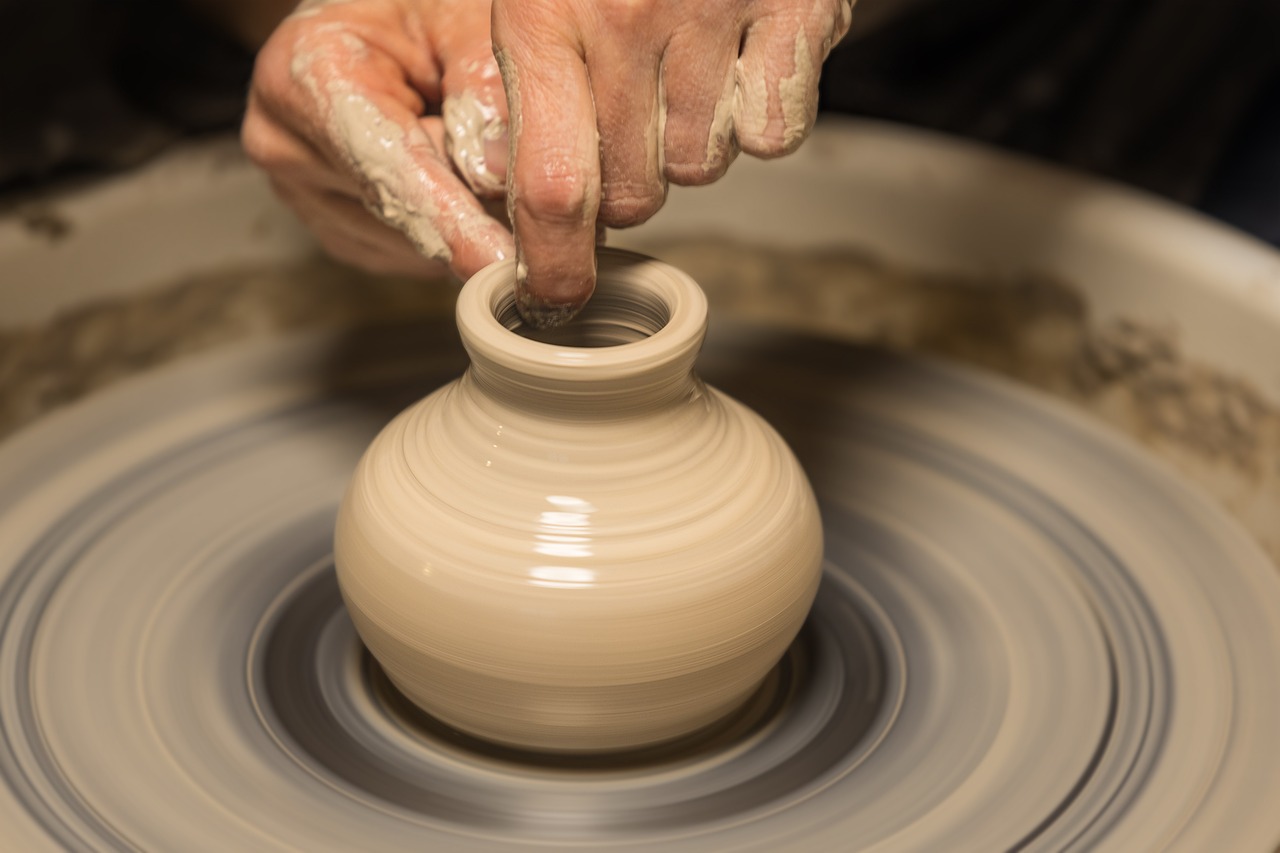
2. Stamping and Imprinting
Stamping and imprinting are two of the most exciting and accessible pottery decoration techniques that can truly transform your ceramic pieces into stunning works of art. Imagine taking a simple lump of clay and, with just a few tools and a bit of creativity, turning it into something that tells a story or evokes emotion. This technique not only adds texture but also depth, making your pottery visually engaging and unique.
At its core, stamping involves pressing a tool or a stamp into the wet clay, leaving behind an impression that can range from simple shapes to intricate designs. You can use a variety of materials for stamping, such as rubber stamps, found objects like leaves or fabric, or even custom-made stamps that reflect your personal style. The beauty of this technique lies in its versatility: you can create patterns that are geometric, floral, or even abstract, depending on your vision.
On the other hand, imprinting is somewhat similar but focuses more on creating a texture or pattern by using a textured surface to press into the clay. This could be something as simple as a piece of lace or a textured mat. The result? A beautiful, tactile surface that invites touch and interaction. Imagine a bowl that not only looks gorgeous but feels amazing in your hands. It’s like adding a secret layer of artistry that only reveals itself when you explore the piece up close.
To get started with stamping and imprinting, here are a few tips:
- Choose Your Tools Wisely: The right stamps can make all the difference. Experiment with different materials to see what creates the best impressions.
- Work with Wet Clay: Ensure that your clay is still wet when you apply the stamps or textures. This will help achieve a clean and defined impression.
- Layering Techniques: Don’t be afraid to layer different stamps and textures. This can create a more complex and visually interesting surface.
One of the most exciting aspects of stamping and imprinting is the ability to play with colors and finishes. After you’ve created your impressions, you can enhance them further with underglazes or glazes. For example, applying a contrasting color to the stamped areas can make the designs pop, adding even more visual intrigue to your pottery.
As you delve deeper into this technique, consider documenting your process. Keeping a journal of your experiments with different stamps and impressions can provide valuable insights and inspire future projects. Plus, it’s a fantastic way to track your artistic journey and see how your style evolves over time.
In summary, stamping and imprinting are not just techniques; they are gateways to creativity. By incorporating these methods into your pottery practice, you open yourself up to a world of possibilities. So grab some clay, gather your tools, and let your imagination run wild!
| Question | Answer |
|---|---|
| What materials can I use for stamping? | You can use rubber stamps, found objects like leaves or fabric, and even custom-made stamps to create unique impressions. |
| Can I use dry clay for stamping? | No, it's best to use wet clay to achieve clean and defined impressions. |
| How can I enhance my stamped designs? | Consider using underglazes or glazes in contrasting colors to make your designs stand out even more. |
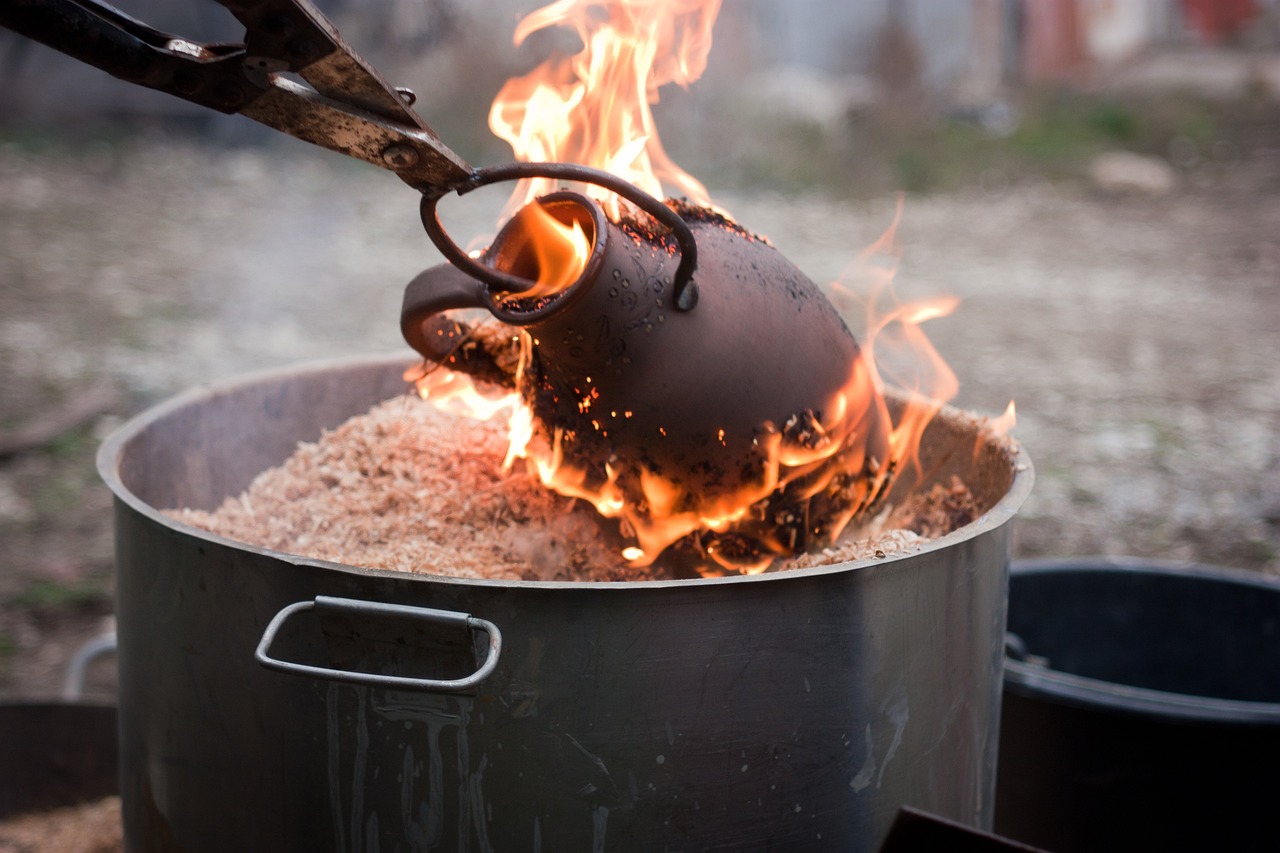
3. Sgraffito Technique
Explore various pottery decoration techniques that can elevate your ceramic creations. This article covers methods ranging from traditional to contemporary styles, offering inspiration for both beginners and seasoned potters.
Hand painting allows for unique, personalized designs on pottery. This technique involves using brushes and underglazes to create intricate patterns, making each piece a true work of art.
Stamping and imprinting involves using tools to create textures and designs on wet clay. This method can produce stunning patterns that add depth and interest to your pottery.
The Sgraffito technique is a fascinating method that brings your pottery to life through the magic of contrast. Imagine a canvas of clay, where you can scratch away the surface to reveal a hidden color underneath. This technique not only adds visual interest but also allows for intricate, detailed designs that can transform a simple piece into a stunning masterpiece.
To begin with, you’ll need to prepare your clay by applying a layer of underglaze. Once this layer is dry, you can use various tools—like a wooden stylus or even a simple needle—to scratch through the top layer. The result? A beautiful interplay of colors that can create everything from delicate floral patterns to bold geometric shapes.
Here are some essential tips to keep in mind when working with the Sgraffito technique:
- Choose Your Colors Wisely: The contrast between the top layer and the exposed clay is what makes Sgraffito pop. So, think about color combinations that will create the most striking effect.
- Experiment with Tools: Different tools can create various textures and designs. Try using brushes, knives, or even your fingers to see what unique patterns you can create.
- Practice Makes Perfect: Don’t be discouraged if your first attempts don’t turn out as expected. The beauty of Sgraffito lies in its organic nature, so embrace the learning process!
One of the best parts about Sgraffito is its versatility. Whether you’re creating functional pottery, like bowls and mugs, or purely decorative pieces, this technique can be adapted to suit your style. Plus, it’s a fantastic way to express your creativity and make each piece truly one-of-a-kind.
In conclusion, the Sgraffito technique is not just a method; it's a form of artistic expression that invites you to play with texture, color, and design. So grab your tools, unleash your imagination, and let your pottery tell a story that is uniquely yours!
Slip trailing is a technique where liquid clay (slip) is applied to the surface using a squeeze bottle. This allows for intricate, raised designs that add texture and dimension to your pottery.
Glazing is a crucial step in pottery decoration, providing color and finish. Various glazing techniques can produce different effects, from glossy to matte, enhancing the overall aesthetic of your pieces.
Using decals and transfers is a modern way to apply designs to pottery. This technique allows for detailed images and patterns to be easily transferred onto your ceramic work.
Incorporating natural materials like leaves, flowers, or stones can create unique textures and patterns. This organic approach adds a touch of nature to your pottery decoration.
Carving and relief work involves removing clay to create designs that stand out. This technique can add a three-dimensional quality to your pottery, making it visually striking.
Combining different materials and techniques can lead to innovative pottery designs. Exploring mixed media allows for creativity and experimentation, resulting in unique, one-of-a-kind pieces.
Q: What is the Sgraffito technique?
A: The Sgraffito technique involves scratching through a surface layer of clay to reveal a contrasting color underneath, creating beautiful designs.
Q: Can beginners try Sgraffito?
A: Absolutely! Sgraffito is a fantastic technique for beginners to explore their creativity and experiment with designs.
Q: What tools do I need for Sgraffito?
A: Basic tools like a wooden stylus, needle, or even a simple knife can be used to scratch designs into the clay.
Q: How do I prepare my pottery for Sgraffito?
A: Start with a layer of underglaze on your pottery. Once it’s dry, you can begin scratching your designs!
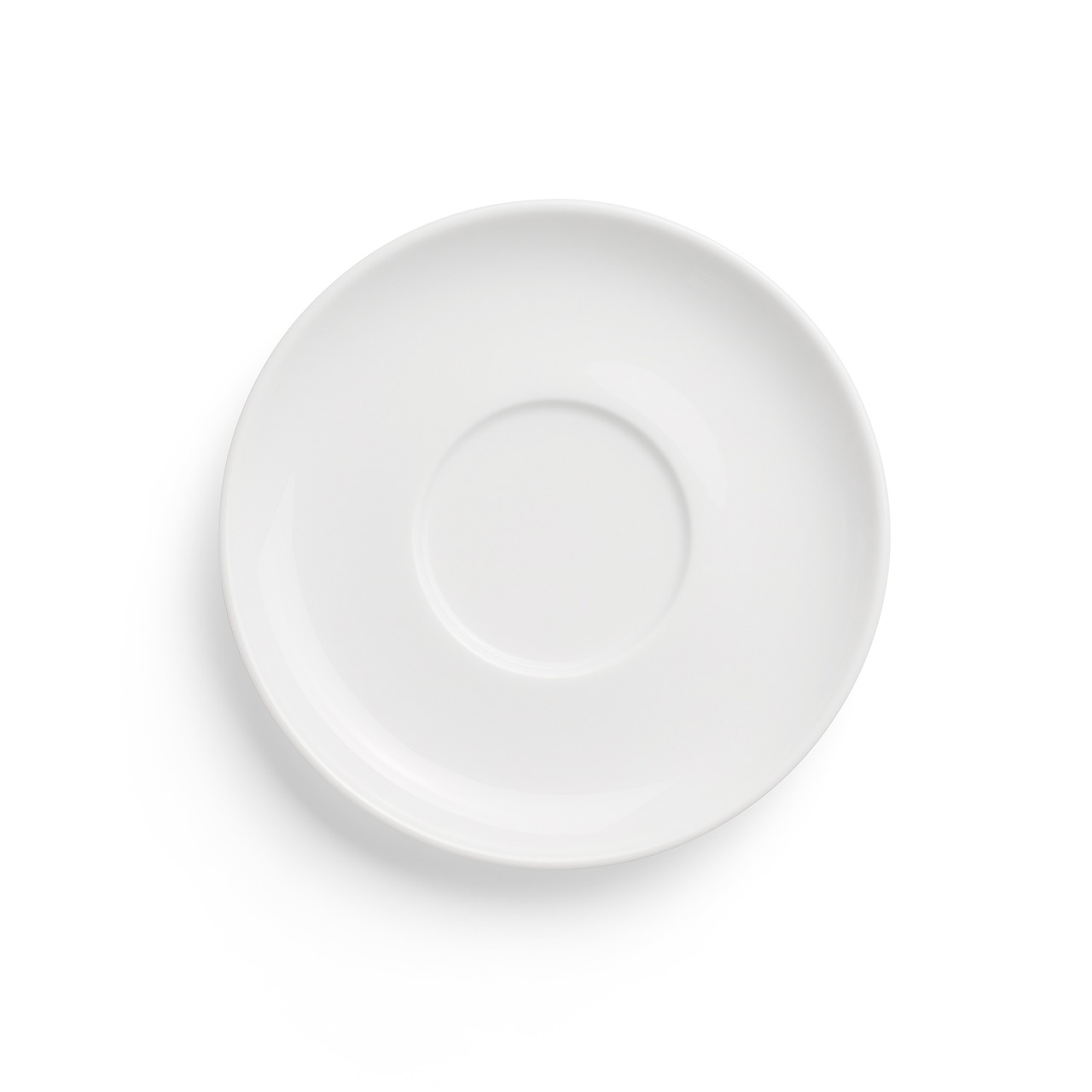
4. Slip Trailing
Slip trailing is one of those magical techniques in pottery that can transform a simple piece into a stunning work of art. Imagine squeezing a bottle filled with liquid clay, known as slip, and watching as intricate designs flow onto the surface of your pottery. This method not only adds visual interest but also creates a tactile experience, making your pieces stand out in any collection. The beauty of slip trailing lies in its versatility; you can create anything from delicate lines to bold patterns, depending on how you wield that bottle!
To get started with slip trailing, you'll need a few essential tools and materials. Here’s a quick rundown:
- Slip: This is a mixture of clay and water, which should be the right consistency—think of it as thick cream!
- Squeeze Bottle: A fine-tipped squeeze bottle is ideal for controlling the flow of slip. You can even repurpose a condiment bottle if you’re feeling crafty!
- Clay Body: Make sure your pottery is leather-hard, which means it’s firm yet still moist enough to accept the slip.
Once you have your materials ready, the real fun begins! Start by practicing your technique on a scrap piece of clay. You’ll want to get a feel for how much pressure to apply to the bottle and how quickly to move your hand. The key is to maintain a steady flow while creating the design you envision. Whether you’re going for swirling lines or geometric shapes, the only limit is your imagination.
After applying the slip, you can enhance your design further by using tools to carve into the slip or even layering different colors of slip for added depth. This creates a beautiful contrast that can elevate your pottery to a whole new level. Plus, the raised texture adds an interesting tactile element that invites touch, making your pieces not just visually appealing but also engaging.
As with any pottery technique, practice makes perfect. Don’t be discouraged if your first attempts don’t turn out exactly as you’d hoped. Each piece teaches you something new, and before you know it, you’ll be slip trailing like a pro! So grab your tools, unleash your creativity, and let the slip trailing adventure begin!
Q: Can I use colored slip for slip trailing?
A: Absolutely! Colored slips can add an exciting dimension to your designs. Just ensure that the colors you choose complement each other.
Q: Do I need to glaze over my slip trailing?
A: While glazing is not mandatory, it can enhance the overall look of your pottery and protect the slip design. A clear glaze can make your colors pop!
Q: What type of clay works best for slip trailing?
A: Stoneware and earthenware clays are commonly used for slip trailing due to their ability to hold the design well. Experiment with different clay bodies to see which one you prefer.
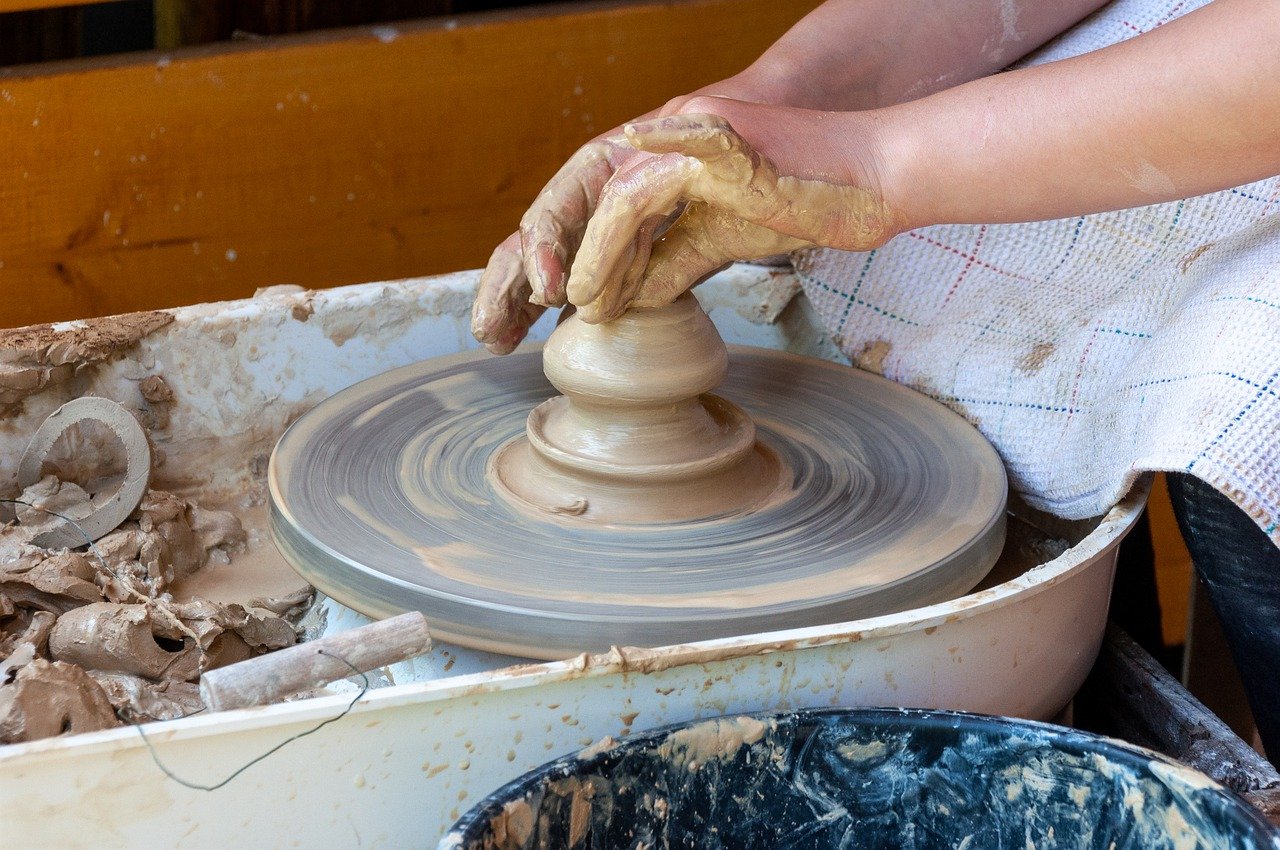
5. Glazing Techniques
Explore various pottery decoration techniques that can elevate your ceramic creations. This article covers methods ranging from traditional to contemporary styles, offering inspiration for both beginners and seasoned potters.
Hand painting allows for unique, personalized designs on pottery. This technique involves using brushes and underglazes to create intricate patterns, making each piece a true work of art.
Stamping and imprinting involves using tools to create textures and designs on wet clay. This method can produce stunning patterns that add depth and interest to your pottery.
Sgraffito is a decorative technique that involves scratching through a surface layer to reveal a contrasting color underneath. This method can create beautiful, detailed designs on your pottery.
Slip trailing is a technique where liquid clay (slip) is applied to the surface using a squeeze bottle. This allows for intricate, raised designs that add texture and dimension to your pottery.
Glazing is a crucial step in pottery decoration, providing color and finish. The right glaze can transform a simple clay piece into a stunning work of art. Glazing techniques vary widely, each offering a unique aesthetic and functional quality. Let's explore some of the most popular methods:
- Dip Glazing: This is the most straightforward technique where the entire piece is dipped into a glaze. It ensures an even coating and is great for beginners.
- Brush-On Glazing: As the name suggests, this method involves applying glaze with a brush. It allows for more control and is perfect for detailed designs.
- Spray Glazing: Using a spray gun, this technique provides a smooth, even finish and is ideal for larger pieces.
- Layering Glazes: By applying multiple layers of different glazes, you can achieve complex colors and textures. This technique requires some experimentation but can yield stunning results.
Each of these techniques can produce different effects, from glossy to matte finishes, enhancing the overall aesthetic of your pieces. For instance, a glossy glaze can make colors pop, while a matte finish can give a more subdued, earthy feel. It's essential to experiment with various combinations to find what resonates with your artistic vision.
Moreover, understanding how glazes interact during firing is key. Some glazes may react with each other or change color in the kiln, leading to unexpected yet beautiful results. Keep a glaze journal to document your trials and errors; this will help you refine your techniques over time.
Incorporating glazing into your pottery not only enhances visual appeal but also adds durability. A well-glazed piece is less porous, making it more functional for everyday use. So, whether you're crafting a decorative bowl or a functional mug, glazing is an essential skill every potter should master.
Using decals and transfers is a modern way to apply designs to pottery. This technique allows for detailed images and patterns to be easily transferred onto your ceramic work.
Incorporating natural materials like leaves, flowers, or stones can create unique textures and patterns. This organic approach adds a touch of nature to your pottery decoration.
Carving and relief work involves removing clay to create designs that stand out. This technique can add a three-dimensional quality to your pottery, making it visually striking.
Combining different materials and techniques can lead to innovative pottery designs. Exploring mixed media allows for creativity and experimentation, resulting in unique, one-of-a-kind pieces.
Q: What is the best glaze for beginners?
A: For beginners, it's advisable to start with a basic transparent or opaque glaze. These are easier to work with and allow for a better understanding of how glazing affects the final piece.
Q: Can I mix different types of glazes?
A: Yes, you can mix glazes, but it's important to test them first. Some glazes may react negatively with each other, while others can create beautiful new effects.
Q: How do I know when my pottery is properly glazed?
A: A well-glazed piece should have an even coating without drips or bare spots. After firing, it should also exhibit the desired finish, whether glossy or matte.
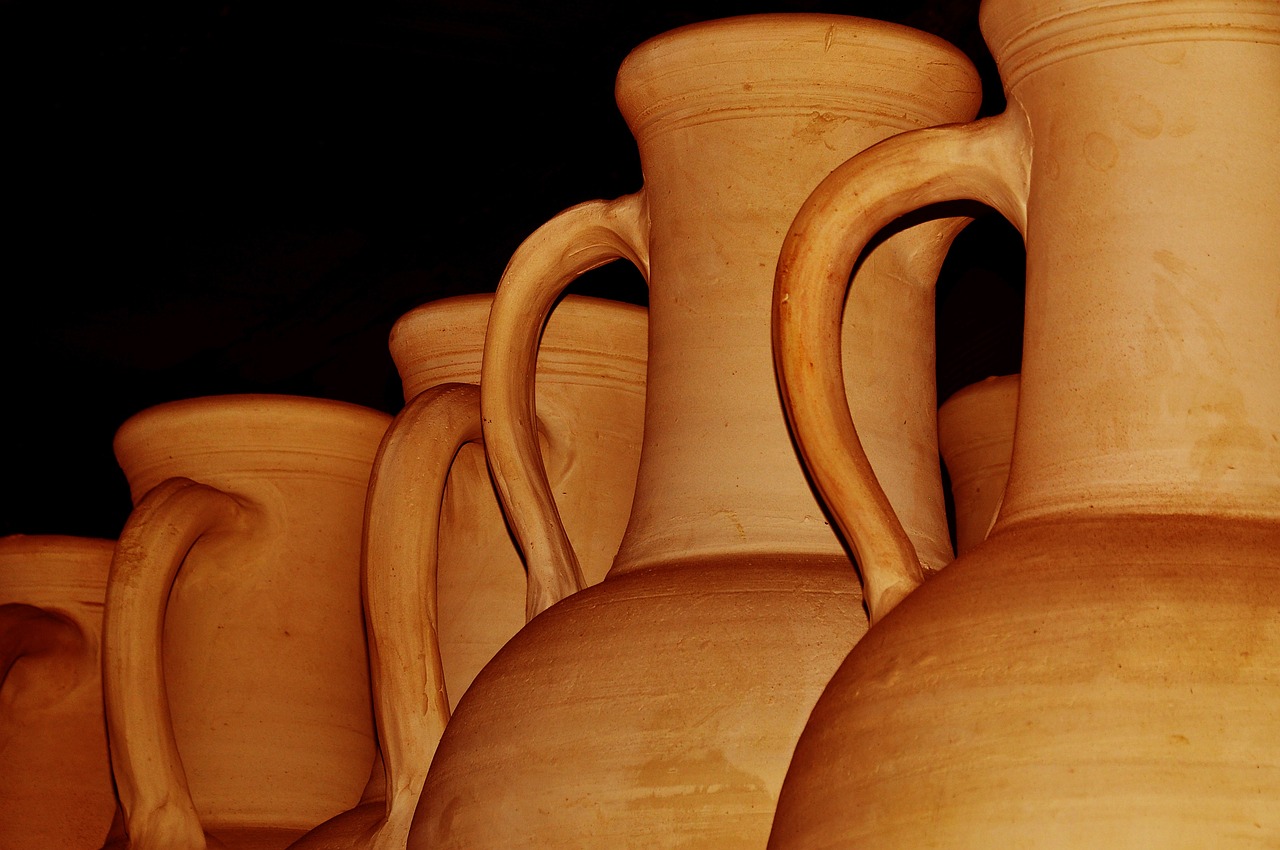
6. Decals and Transfers
Explore various pottery decoration techniques that can elevate your ceramic creations. This article covers methods ranging from traditional to contemporary styles, offering inspiration for both beginners and seasoned potters.
Hand painting allows for unique, personalized designs on pottery. This technique involves using brushes and underglazes to create intricate patterns, making each piece a true work of art.
Stamping and imprinting involves using tools to create textures and designs on wet clay. This method can produce stunning patterns that add depth and interest to your pottery.
Sgraffito is a decorative technique that involves scratching through a surface layer to reveal a contrasting color underneath. This method can create beautiful, detailed designs on your pottery.
Slip trailing is a technique where liquid clay (slip) is applied to the surface using a squeeze bottle. This allows for intricate, raised designs that add texture and dimension to your pottery.
Glazing is a crucial step in pottery decoration, providing color and finish. Various glazing techniques can produce different effects, from glossy to matte, enhancing the overall aesthetic of your pieces.
Using decals and transfers is a modern way to apply designs to pottery. This technique allows for detailed images and patterns to be easily transferred onto your ceramic work, making it a favorite among both amateurs and professionals. Imagine being able to adorn your pottery with stunning graphics, intricate floral designs, or even photographs! It’s like giving your pieces a whole new wardrobe without the need for extensive painting skills.
The process typically involves the following steps:
- Selection: Choose your desired decal or transfer design. You can find many options online or create your own.
- Preparation: Ensure your pottery is clean and free from dust.
- Application: Carefully apply the decal or transfer onto the surface of your pottery, ensuring there are no air bubbles.
- Firing: Finally, fire your piece in the kiln to set the design, making it permanent and dishwasher safe.
One of the best aspects of this technique is its versatility. You can use decals for a variety of pottery types, whether it's functional ware or decorative pieces. Moreover, decals can be combined with other methods, such as hand painting or glazing, to create a layered effect that is visually stunning.
However, it’s essential to choose high-quality decals that are specifically made for ceramics. This ensures that they withstand the firing process and maintain their vibrancy over time. When experimenting with decals, don’t be afraid to mix and match different styles and colors. The sky's the limit when it comes to creativity!
Incorporating natural materials like leaves, flowers, or stones can create unique textures and patterns. This organic approach adds a touch of nature to your pottery decoration.
Carving and relief work involves removing clay to create designs that stand out. This technique can add a three-dimensional quality to your pottery, making it visually striking.
Combining different materials and techniques can lead to innovative pottery designs. Exploring mixed media allows for creativity and experimentation, resulting in unique, one-of-a-kind pieces.
1. What are the best decals for pottery?
High-quality ceramic decals that are specifically designed for firing in a kiln are the best choice. Look for brands that are well-reviewed and have a good reputation in the pottery community.
2. Can I use regular stickers for pottery decoration?
No, regular stickers are not suitable for pottery as they cannot withstand the high temperatures of a kiln. Always use decals made for ceramics.
3. How do I ensure my decals last after firing?
Make sure to follow the manufacturer's instructions carefully for application and firing. Using the correct temperature and time in the kiln is crucial for the longevity of the decals.
4. Can I combine decals with other decoration techniques?
Absolutely! Decals can be combined with hand painting, glazing, and other techniques to create stunning, layered effects on your pottery.
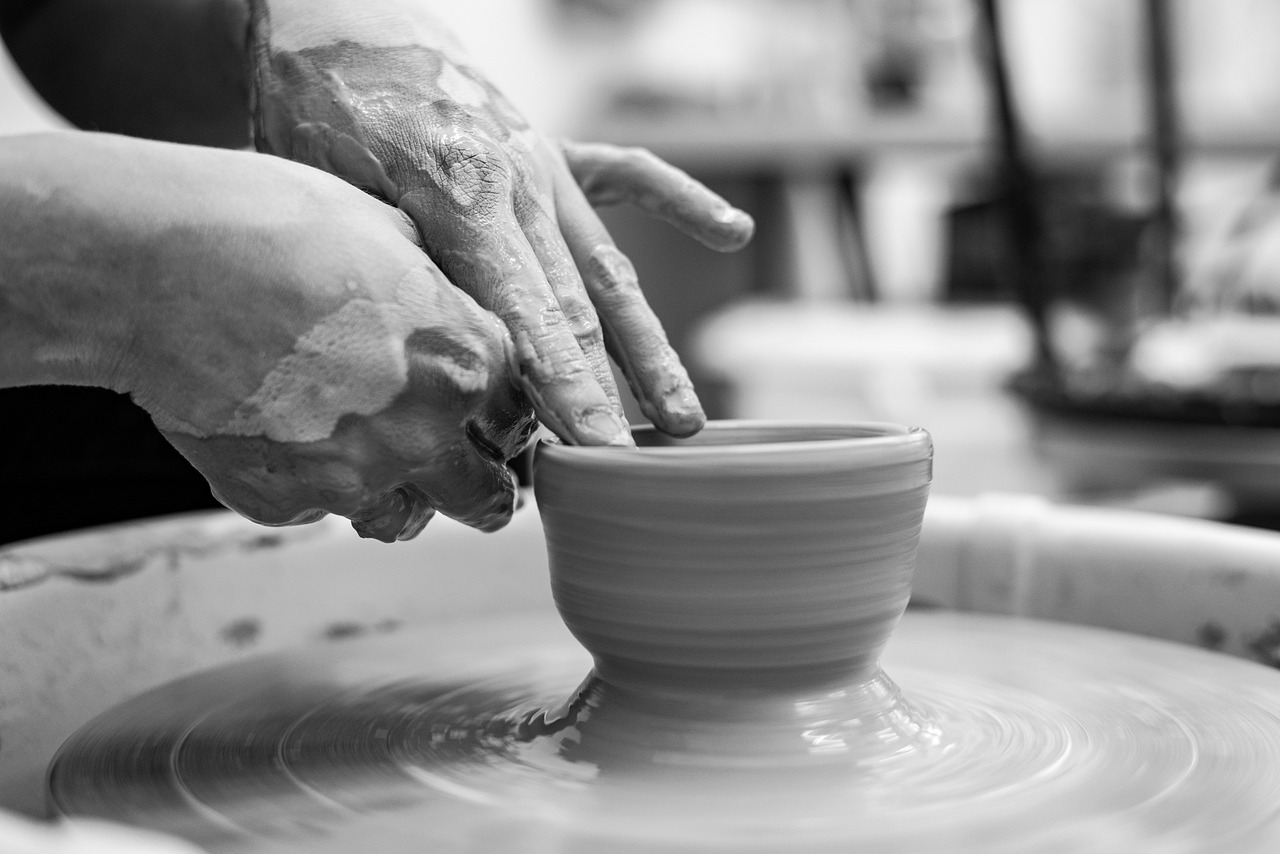
7. Natural Materials
Explore various pottery decoration techniques that can elevate your ceramic creations. This article covers methods ranging from traditional to contemporary styles, offering inspiration for both beginners and seasoned potters.
Hand painting allows for unique, personalized designs on pottery. This technique involves using brushes and underglazes to create intricate patterns, making each piece a true work of art.
Stamping and imprinting involves using tools to create textures and designs on wet clay. This method can produce stunning patterns that add depth and interest to your pottery.
Sgraffito is a decorative technique that involves scratching through a surface layer to reveal a contrasting color underneath. This method can create beautiful, detailed designs on your pottery.
Slip trailing is a technique where liquid clay (slip) is applied to the surface using a squeeze bottle. This allows for intricate, raised designs that add texture and dimension to your pottery.
Glazing is a crucial step in pottery decoration, providing color and finish. Various glazing techniques can produce different effects, from glossy to matte, enhancing the overall aesthetic of your pieces.
Using decals and transfers is a modern way to apply designs to pottery. This technique allows for detailed images and patterns to be easily transferred onto your ceramic work.
Incorporating natural materials into your pottery decoration can transform your pieces into stunning works of art that are rich in texture and visual interest. Imagine using leaves, flowers, or even stones to create unique patterns that tell a story of nature's beauty. This organic approach not only enhances the aesthetic appeal of your pottery but also connects your art to the environment.
One fascinating aspect of using natural materials is the variety of textures and designs they can create. For instance, pressing a leaf into wet clay can leave behind an intricate imprint, capturing the delicate veins and edges of the leaf. Similarly, using flowers can yield beautiful, ephemeral patterns that celebrate the fleeting beauty of nature. Not to mention, stones can be used to create a rugged, earthy texture that adds depth to your work.
Here are some natural materials you might consider using in your pottery projects:
- Leaves: Perfect for creating detailed impressions.
- Flowers: Can produce stunning patterns and colors.
- Stones: Ideal for adding texture and a rustic feel.
Additionally, experimenting with these materials can lead to unexpected results. For example, you might find that certain leaves release natural pigments that stain the clay, creating a beautiful, natural color palette. This unpredictability is part of what makes working with natural materials so exciting!
So, why not step outside and gather some inspiration from the world around you? Whether you're a beginner or a seasoned potter, incorporating natural materials can add a fresh, earthy touch to your creations, making them truly one-of-a-kind.
1. Can I use any type of natural material in my pottery?
Yes, you can use a variety of natural materials! However, it's important to ensure that they are clean and free from chemicals that could affect the clay or glaze.
2. How do I prepare natural materials for use in pottery?
You should clean and dry your natural materials. For leaves and flowers, pressing them flat can help preserve their shape and detail when used in your pottery.
3. Will using natural materials affect the firing process?
Some natural materials may burn away during firing, while others might leave behind interesting textures or colors. It’s best to experiment and see what works for your specific project!
4. Are there any safety concerns when using natural materials?
Always ensure that the natural materials you use are non-toxic and safe for ceramics. Avoid materials that might contain harmful chemicals or toxins.
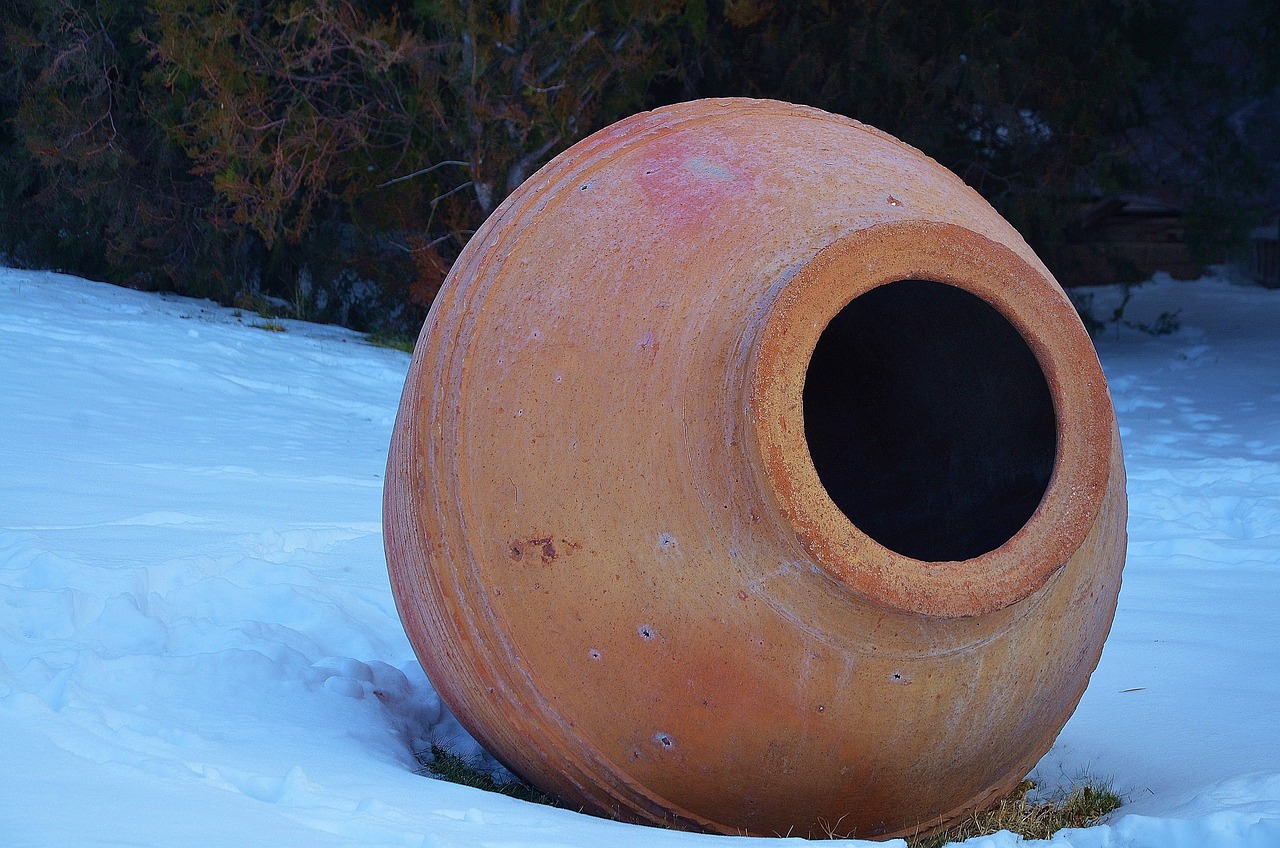
8. Carving and Relief Work
Carving and relief work is one of the most captivating techniques in pottery decoration. Imagine transforming a simple lump of clay into a stunning piece of art that tells a story. This method involves removing clay to create designs that stand out, adding a three-dimensional quality that can make your pottery visually striking. It’s like sculpting, but with the added flair of intricate detailing that captures the eye and sparks conversation.
When you dive into carving and relief work, you're not just creating a surface design; you're adding depth and texture that can turn ordinary pottery into extraordinary pieces. The beauty of this technique lies in its versatility. You can carve simple patterns or go all out with complex scenes and motifs. Whether you're inspired by nature, geometric shapes, or cultural symbols, the canvas of clay is yours to explore.
To get started with carving, you'll need a few essential tools, such as:
- Carving tools: These come in various shapes and sizes, allowing you to create different textures and designs.
- Rib tools: Useful for smoothing surfaces and refining your designs.
- Stamps: Pre-made stamps can help you create consistent patterns and textures.
One of the most exciting aspects of carving is the ability to combine it with other techniques. For example, you can carve into a piece that has already been glazed, or you can add color to your relief designs using underglazes. This combination can result in breathtaking contrasts that make your pottery truly stand out.
Another fantastic benefit of this technique is that it allows for experimentation. You might start with a simple design, but as you carve, you may find yourself inspired to add more detail or change the pattern entirely. This fluidity in the creative process can lead to unexpected and delightful results.
Moreover, carving and relief work can also be therapeutic. The tactile nature of working with clay, combined with the focus required for carving, can provide a sense of calm and satisfaction. Many potters find that the rhythm of carving helps them unwind and connect with their creativity on a deeper level.
In conclusion, carving and relief work are not just about creating beautiful designs; they're about expressing your artistic vision and connecting with the materials in a meaningful way. So, grab your tools, let your imagination run wild, and see where your carving journey takes you!
Here are some common questions about carving and relief work in pottery:
- What type of clay is best for carving? Generally, stoneware or earthenware clays are ideal as they are sturdy and can hold intricate designs well.
- Can I carve after the piece has been fired? It's possible to carve into bisqueware, but be cautious as it can break easily. Always ensure your piece is sturdy enough for this process.
- How do I maintain the sharpness of my carving tools? Regularly honing your tools and keeping them clean will help maintain their sharpness and efficiency.

9. Mixed Media Techniques
Explore various pottery decoration techniques that can elevate your ceramic creations. This article covers methods ranging from traditional to contemporary styles, offering inspiration for both beginners and seasoned potters.
Hand painting allows for unique, personalized designs on pottery. This technique involves using brushes and underglazes to create intricate patterns, making each piece a true work of art.
Stamping and imprinting involves using tools to create textures and designs on wet clay. This method can produce stunning patterns that add depth and interest to your pottery.
Sgraffito is a decorative technique that involves scratching through a surface layer to reveal a contrasting color underneath. This method can create beautiful, detailed designs on your pottery.
Slip trailing is a technique where liquid clay (slip) is applied to the surface using a squeeze bottle. This allows for intricate, raised designs that add texture and dimension to your pottery.
Glazing is a crucial step in pottery decoration, providing color and finish. Various glazing techniques can produce different effects, from glossy to matte, enhancing the overall aesthetic of your pieces.
Using decals and transfers is a modern way to apply designs to pottery. This technique allows for detailed images and patterns to be easily transferred onto your ceramic work.
Incorporating natural materials like leaves, flowers, or stones can create unique textures and patterns. This organic approach adds a touch of nature to your pottery decoration.
Carving and relief work involves removing clay to create designs that stand out. This technique can add a three-dimensional quality to your pottery, making it visually striking.
Mixed media techniques in pottery are like a creative playground where your imagination can run wild! This approach encourages potters to combine various materials and methods, leading to innovative designs that truly stand out. Imagine blending traditional clay with unexpected materials like glass, metal, or even fabric. The possibilities are endless!
When you dive into mixed media, you're not just limited to clay and glaze. You can incorporate items such as:
- Textiles: Add fabric elements to your pottery for a unique touch.
- Glass: Fused glass pieces can create stunning visual contrasts.
- Found Objects: Incorporate stones, beads, or other found materials for added texture.
One of the exciting aspects of mixed media techniques is the **freedom to experiment**. You might use a traditional pottery wheel to shape your piece, then add a splash of modern flair by embedding glass shards or painting with metallic paints. The juxtaposition of old and new can create a striking visual narrative.
Moreover, mixed media allows you to tell a story. Each element you introduce can represent a different aspect of your life or artistic journey. For example, adding a piece of fabric from a cherished memory can evoke emotions, making your pottery not just an object, but a **conversation starter**.
Whether you’re a beginner or a seasoned potter, don’t hesitate to explore mixed media. It’s all about **pushing boundaries** and discovering new artistic expressions. Remember, the only limit is your creativity!
1. What are mixed media techniques in pottery?
Mixed media techniques in pottery refer to the combination of different materials and methods to create unique and innovative ceramic pieces. This can include integrating textiles, glass, or found objects with traditional clay work.
2. Can beginners try mixed media pottery?
Absolutely! Mixed media pottery is accessible to everyone. It encourages experimentation, making it a perfect avenue for beginners to explore their creativity without the fear of making mistakes.
3. Do mixed media pieces require special care?
Yes, mixed media pottery may require special care depending on the materials used. For instance, pieces that incorporate glass might need to be handled more delicately than traditional clay items.
4. Where can I find inspiration for mixed media pottery?
Inspiration can be found everywhere! Look at art galleries, nature, or even your own life experiences. Online platforms like Pinterest and Instagram are also great resources for discovering new ideas and techniques.
Frequently Asked Questions
- What is hand painting in pottery decoration?
Hand painting is a technique where artists use brushes and underglazes to create unique designs on pottery. This method allows for a personal touch, making each piece a true reflection of the artist's creativity.
- How does the stamping and imprinting technique work?
Stamping and imprinting involves pressing tools into wet clay to create textures and patterns. This technique can produce stunning designs that add depth and visual interest to your pottery, making it stand out.
- What is the sgraffito technique?
Sgraffito is a decorative method where a surface layer of clay is scratched away to reveal a contrasting color underneath. This technique allows for intricate designs, giving your pottery a unique and detailed appearance.
- What is slip trailing in pottery?
Slip trailing is a technique where liquid clay, known as slip, is applied to the surface of pottery using a squeeze bottle. This method allows for the creation of intricate, raised designs that add texture and dimension to your pieces.
- Why are glazing techniques important in pottery?
Glazing is crucial because it provides color, finish, and protection to pottery. Different glazing techniques can create various effects, from glossy to matte, enhancing the overall aesthetic and durability of your ceramic creations.
- How do decals and transfers work in pottery decoration?
Decals and transfers are modern methods of applying designs to pottery. They allow for detailed images and patterns to be easily transferred onto your ceramic work, making it simple to achieve complex designs without hand-painting.
- Can I use natural materials in pottery decoration?
Absolutely! Incorporating natural materials like leaves, flowers, or stones can create unique textures and patterns. This organic approach adds a beautiful touch of nature to your pottery decoration, making each piece truly special.
- What is carving and relief work in pottery?
Carving and relief work involves removing clay to create designs that stand out from the surface. This technique adds a three-dimensional quality to your pottery, making it visually striking and engaging.
- What are mixed media techniques in pottery?
Mixed media techniques involve combining different materials and methods in pottery decoration. This approach encourages creativity and experimentation, leading to innovative and unique pieces that showcase the artist's individuality.



















